
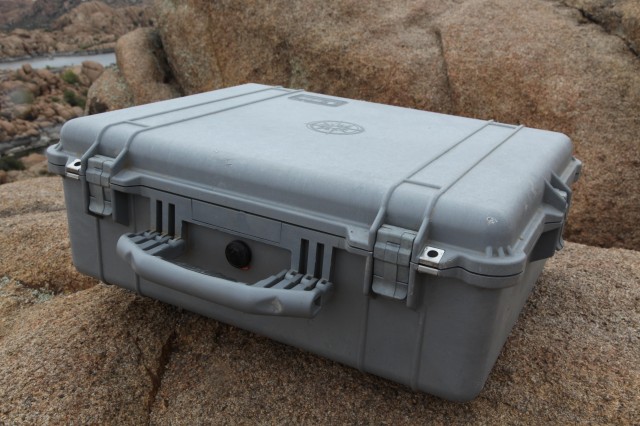
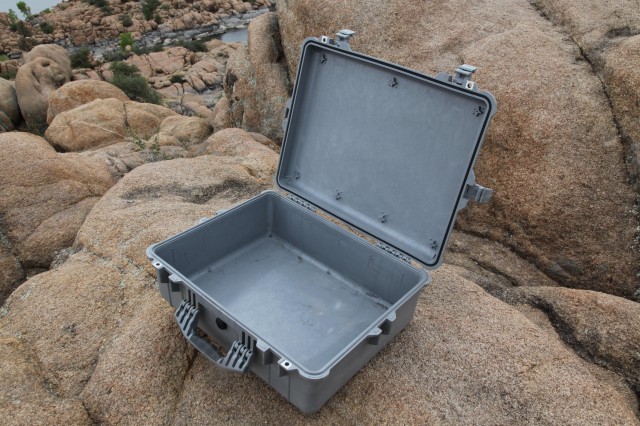
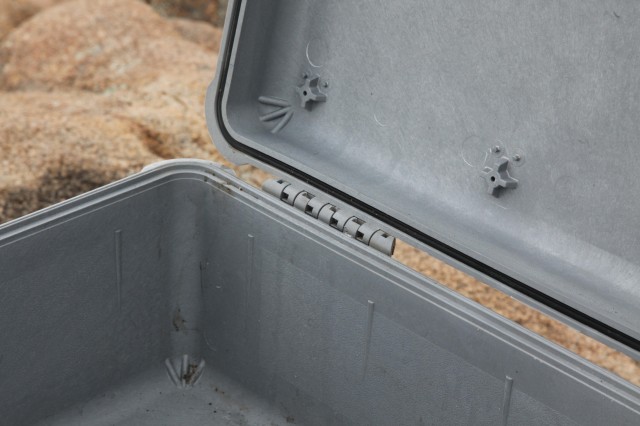
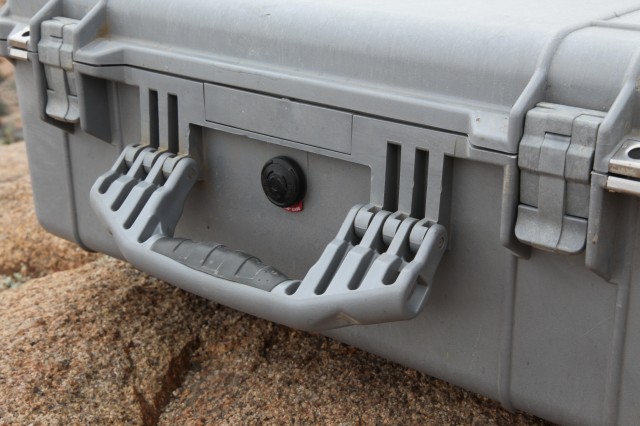
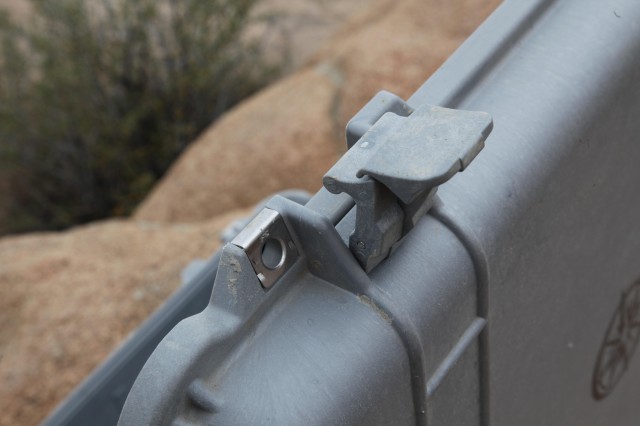
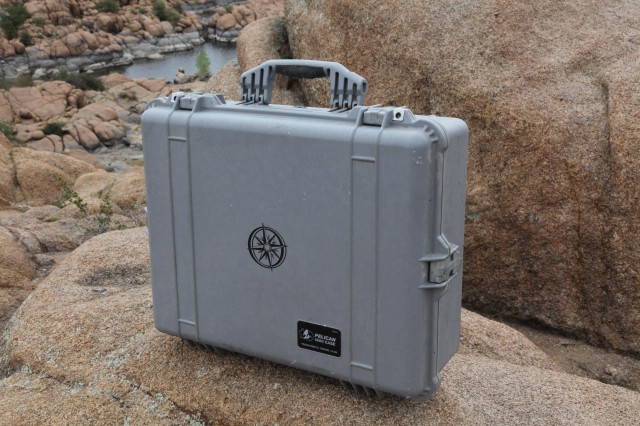
Pros:
Cons:

Because I had relatively little experience with ALU-boxes, I enlisted the help of landlocked people who had owned the boxes and traveled thousands of miles with them for years. Their insight was invaluable, and their story of ALU-Boxs surviving the unimaginable attack confirms my good reputation for the brand. When evaluating the ALU-Box, I first emptied the contents of my Pelican 1600 and transferred them directly to ABA42. I was surprised, given that the ALU-Box is 4 litres smaller, that the volume seems similar. I'm inclined to attribute it to the internal shape of ABA42, but I'll say more about that in a minute.
As its name suggests, the ALU-Box is an all-metal case made of high-quality aluminum components. The sides of the case are made of precisely bent aluminum plates with interlocking seams. The bottom perimeter is made of extruded aluminum, and the corners of the lid are reinforced with cast aluminum fittings, which not only protect the corners from damage, but also facilitate the safe stacking of multiple boxes. The handle and lockcompatible latch are also made of aluminum, and a rubber pad at the lid connector keeps out moisture and dust. The ABA42 also has handles on three sides for easy carrying and secure binding. The handles are spring-loaded to secure them to the sides of the case, reducing any unwanted rattling.
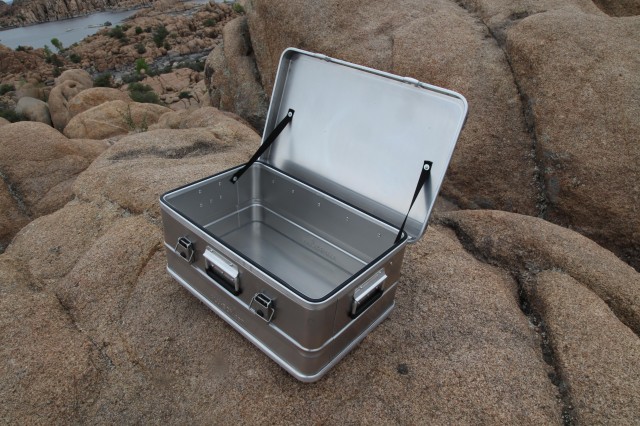
All-aluminum boxes have several key benefits, most notably reduced weight and volume. The ABA42 only weighs 9.9 pounds but can pull 220 pounds. Due to the thin wall thickness, the exterior dimensions are almost identical to the interior dimensions, giving it an excellent size-to-volume ratio. It operates at temperatures ranging from -238Fº to over 300Fº. The manufactured quality is amazingly accurate and it certainly looks like part of an adventure class device.
In discussing ABA42's nuances, I can't help but admire the efficiency of its available storage space. The Pelican case has a relatively rounded interior with a deep lid, while the ALU-Box's low-key lid and its more box-like interior seemed more receptive to my gear. It made me realize how heavy and crude the Pelican case was. When stacking multiple ALU-boxes, I have to admit that this is a very efficient system. I can see why many professional expeditions rely on ALU-box boxes, as their stacking ability is reason enough to buy them. I can also see how the ALU-Box provides a lifetime of rugged use. With the exception of replaceable rubber pads, nothing is damaged or degraded by uv rays or weather.
This is true of almost all products, nothing is perfect, and the same is true of alu-Box. It's surprisingly waterproof, but it can't claim to be completely waterproof. That said, many users were quick to assert that they had traveled thousands of miles on the roof of their car with the ALU-Box, and that even through countless storms, their case was always resistant to water intrusion. While I'd call the ALU-Box sufficiently weatherproof, I can't say it has the overall durability of the Pelican. Dents and scratches are evident on aluminum surfaces. Called the "halo of the Expedition," the Alu-Box is unlikely to be too damaged to be used, but it may develop some "features" in a few years.
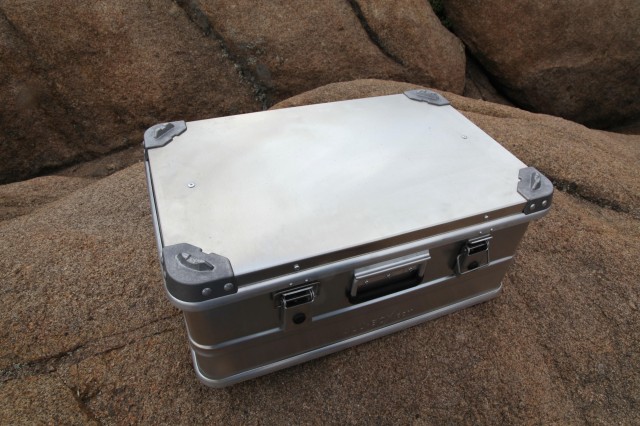
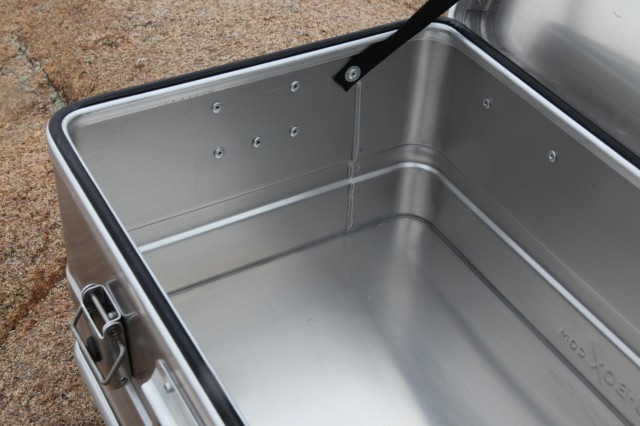
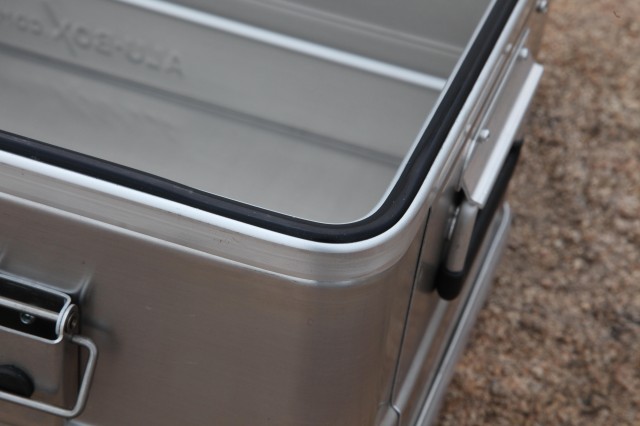
Pros:
Cons:
It was another head-to-head comparison that forced me to sort out the winners, re-examine my initial impressions, and scratch my chin again. For fragile electronics facing the potential threat of being submerged or crushed, I am willing (and do) accept compromises in the size and volume of Pelican boxes. For everything else, I guess I'm an Alu-box switcher. There are a few other factors I should fully include in the discussion, such as purchase price and warranty. The ALU-Box is a bit more expensive than Pelican, simply because Pelican can't seem to control its supply chain. A case of model 1600 can be found for explosive prices as low as $180. The Pelican comes with a lifetime warranty, while the ALU-Box comes with a fairly rudimentary one-year warranty. Either case is likely to outlast the user, so the value and warranty issues are moot to some extent. I can use ABA42 for the next thirty years, and the annual investment is equivalent to a fancy coffee.
It's a tough one, but I'm going to make the decision. For the smaller cases used to protect cameras and electronics, I'd give The Pelican the edge. For larger boxes, especially those over 40 liters, the ALU-Box seems to be the better choice, if only barely.